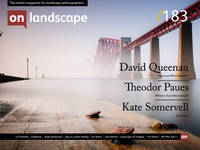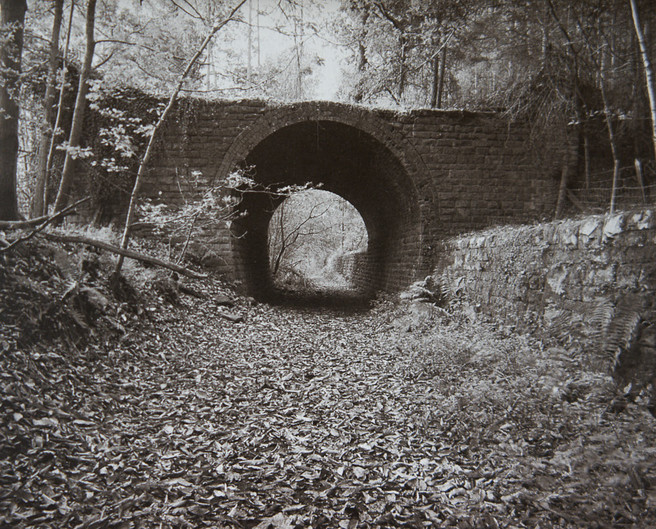Roger Backhouse chooses one of his favourite images
Roger Backhouse
I am an amateur photographer living in Worcestershire. As an academic dealing with the history of ideas, my day job revolves around words: reading other peoples’ words and then writing my own. As a non-verbal medium, photography provides a valuable break from words. Most of my landscape images are taken close to home and Godwin’s studies of the Forest of Dean, not very far away, provide one source of inspiration. I prefer working in monochrome and have recently been experimenting with infra-red.
As for many contributors to end frame, choosing my favourite landscape photo is an impossible task. Often the answer would be the photo that I have seen most recently. Instead, like some other contributors, I have chosen a photo with a message, perhaps even a prescient message as the photo was in a book published in 1986 and must have been taken well over thirty years ago before concerns with impact people were having on nature had reached its current level.
Choosing this photo is about Fay Godwin’s book, The Secret Forest of Dean (Redcliffe Press and Arnolfini Gallery in collaboration with the Forestry Commission, 1986), in which it is printed, as much as about the picture itself.
The book is one that has been on my shelves for at least thirty years, having been given to me because I was interested in photography because it was about somewhere local and possibly because it was favourably reviewed in The Guardian newspaper. I have looked at it periodically over the years but it was only very recently that I took a more serious interest in it, because I had started thinking about undertaking a similar project.
Individually, the photographs in the book might be thought unremarkable. They are all black and white and although they all have an excellent range of tones—the mark of good traditional darkroom work—many of them don’t stand out as particularly dramatic (though that may be because I have never seen the originals, only reproductions in a small paperback book). The first four images include two of sunlight streaming through trees and two of trees in mist but the rest appear to have comparatively flat lighting. A few have some clouds, though nothing particularly dramatic and several other skies are plain white. However, none of this stops the images from having an impact.
The theme linking these images is that Godwin focused on the marks that have left on the landscape, not avoiding in order to show a more beautiful natural landscape.
There are many images I could have chosen but the one I have opted for is a very simple image of a brick-built bridge spanning a former railway track bounded by a wall on one side and a low bank on the other (The Secret Forest of Dean, p. 59.) It is not the most dramatic image in the book—that prize would probably go to “Fence” or “Gossamers” with the wonderful sunlight streaming through the trees—but I find it a fascinating image.
The foreground is covered in leaves and the textures of the leaves and the wall, rendered in mid-tones, are clear even in the small reproduction in the printed book. The Romanesque arch of the bridge is framed on one side by a sapling leaning over with the wall leading into it on the other side. The whole picture is covered in fine detail. It is a beautifully balanced image. And then what makes the image for me is that the darkness under the bridge frames an image that is complete in itself—another view of the railway line overshadowed by another slender tree.
A seemingly simple scene, in which man-made objects and nature combine. The book tells us that the brickwork was deemed unsafe and had to be demolished, meaning that the view is no longer there.


